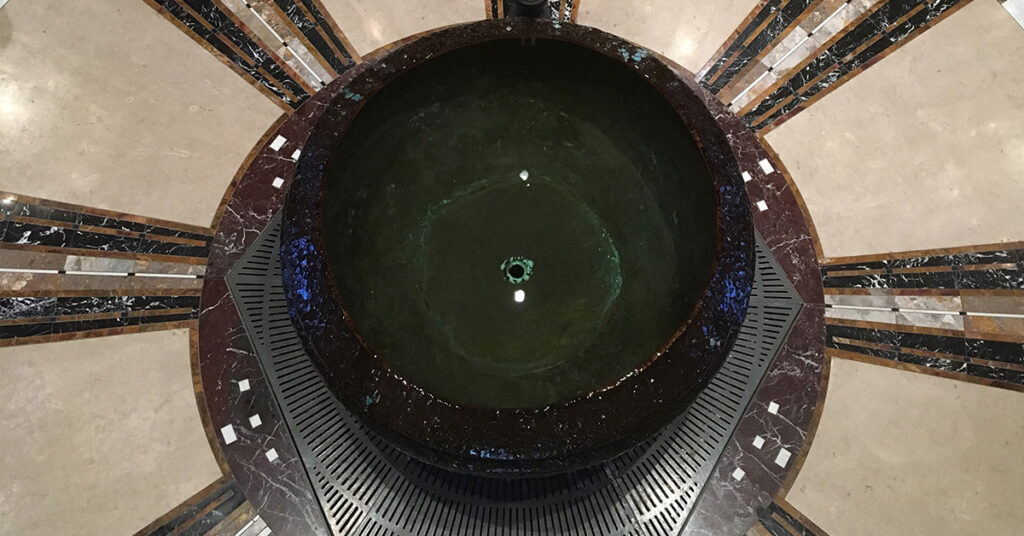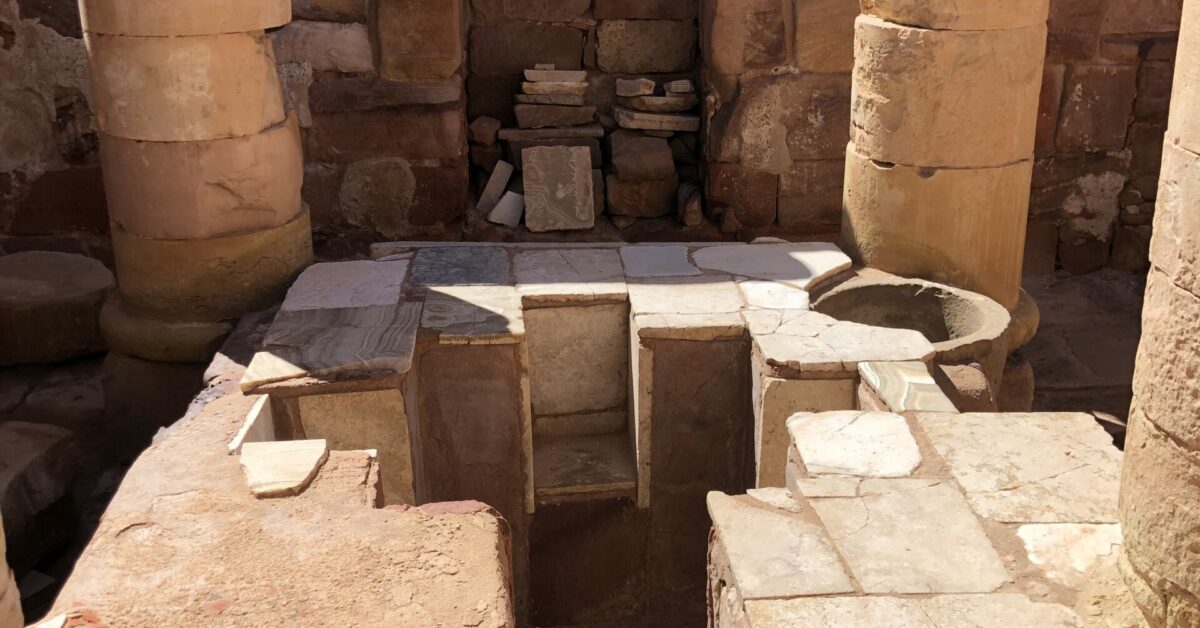Awe-Inspiring: Baptism as Tomb and Womb
Kent ended last week’s post by describing baptism as a “dramatic joining to the Lord Jesus Christ, by renouncing the Evil One, adhering to Jesus, and being washed to new life by drowning and dying in the baptismal tomb and womb.” He quoted extensively from Cyril of Jerusalem and John Chrysostom. Yarnold’s book, The Awe-Inspiring Rites of Initiation, also includes mystagogical sermons by Ambrose of Milan and Theodore of Mopsuestia, who also use the metaphors of womb and tomb as they reveal the mysteries of baptism. All page references are to Yarnold.
Ambrose of Milan: Tomb Metaphor (drawing on the images of death and resurrection from Romans 6)
To begin his third Sermon on the Sacraments, Ambrose summarizes the previous day’s sermon: “Yesterday the subject of our instruction was the font, which has the shape and appearance of a sort of tomb” (120). Ambrose begins the second sermon with a series of biblical stories that include water. First, he notes the pool at the Sheep Gate, where the angel’s stirring of the water brings healing to one (“How much greater is the grace of the Church in which all those who go down into the water are saved,” 112). Then he reviews narratives from the previous day: Naaman the leper, healed in the Jordan; the flood; the crossing of the Red Sea. A curious choice of narrative follows: Elisha throwing the axe handle in the water after losing the iron head, which then miraculously floats. Ambrose’s allegorical interpretation is that “in the cross of Christ [i.e., the wooden handle] … every [one’s] sickness is lightened” (114). Finally, he comes to an extended discourse on the human condition (Gen 2–3) and its remedy (Romans 6).
Adam “was cast out of paradise” and “became subject to death…. The sentence was divine, and it could not be remitted by humankind. The remedy was found. It was that man should die and rise again. Why? So that what had formerly served as a sentence, should now serve as a gift. And what is this but death? ‘How can this be?,’ you ask. Because death, when it comes, puts an end to sin. When we die, we do indeed stop sinning…. But in order that God’s gift might continue for ever … Christ invented the resurrection, in order to restore the heavenly gift which had been lost through the deceit of the serpent” (116).
“So the apostle exclaims, as you have just heard in the reading, ‘Whoever is baptized, is baptized in the death of Jesus.’ What does ‘in the death’ mean? It means that just as Christ died, so you will taste death; that just as Christ died to sin and lives to God, so through the sacrament of baptism you are dead to the old enticements of sin and have risen again through the grace of Christ. … So you are crucified with him, you are fastened to Christ, you are fastened by the nails of our Lord Jesus Christ lest the devil pull you away. May Christ’s nail continue to hold you, for human weakness seeks to pull you away” (119).
Our Lutheran readers will likely resonate with this language of death and resurrection, for it was Luther’s preferred image for baptism, and it is so appropriate for catechetical formation at this time in the church year. For those of us deeply wedded to the language of Romans 6, Theodore of Mopsuestia is a wake-up call to the multivalent images in Scripture about baptism.
Theodore of Mopsuestia: Tomb and Womb Metaphors Mixed (Romans 6 and John 3)
After a quick summary of the previous day’s homily, Theodore moves from the sealing prior to the baptism to unfolding the meaning of the baptism in water by juxtaposing the opposing language of “new birth,” death, and “rising from the dead,” saying,
“Baptism contains the signs of the new birth which will be manifested in reality when you rise from the dead and recover all that death has stolen from you … You will gain the new birth by rising from the dead to a second existence … you will gain this in reality when the time comes for you to rise again to your new birth; but now you have faith in Christ … and … you must be content with receiving symbols and signs … which affords you certainty of sharing in the blessings to come” (181).
He continues by recounting Jesus’ conversation with Nicodemus about being “born from above” (John 3), interpreting the passage by saying that Jesus “speaks of the Spirit because this birth is due to the Spirit’s operation” (182) before switching to Romans 6, linking the ritual of baptism to this text:
“So when I am baptized and put my head under the water, I wish to receive the death and burial of Christ our Lord, and I solemnly profess my faith in this resurrection; when I come up out of the water, this is a sign that I believe am already risen” (183).
The bishop’s blessing of the water transforms it into “the water of second birth” by calling down the Holy Spirit to “make it capable of begetting this awesome birth, making it a womb for sacramental birth” (185). He continues,

“the one baptized settles in the water as in a kind of womb, like a seed showing no sign of an immortal nature; but once baptized and endowed with the divine grace of the Spirit, his nature is reshaped completely. Once mortal, it becomes immortal; once corruptible, it becomes incorruptible; once changing, it becomes unchanging; by the almighty power of him whom who forms it” (186).
Returning to the invocation of the Spirit upon the water, he says, “In this way the water becomes an awesome womb of the second birth; in this way all who go down into the water are formed again by the grace of the Holy Spirit and born again in another, higher nature …” (187).
